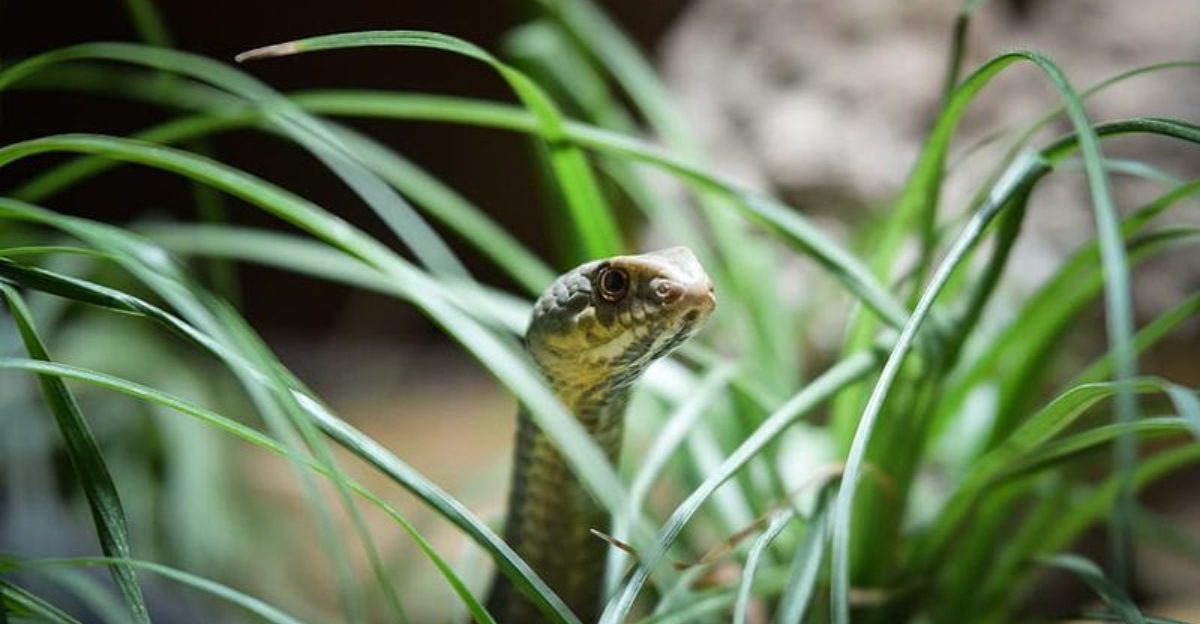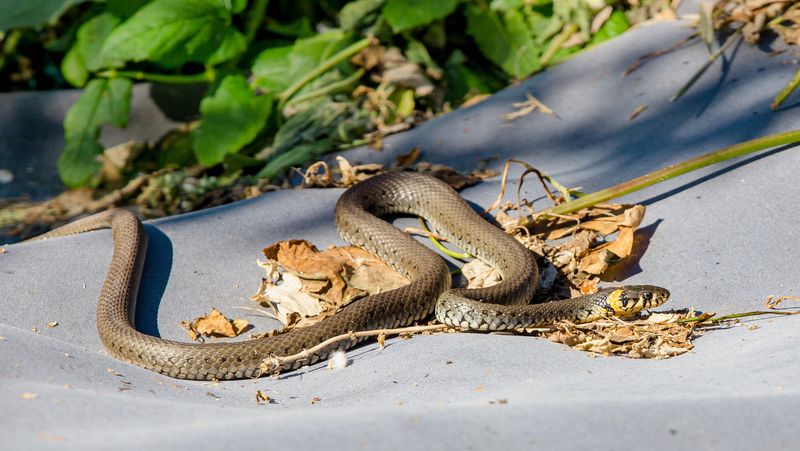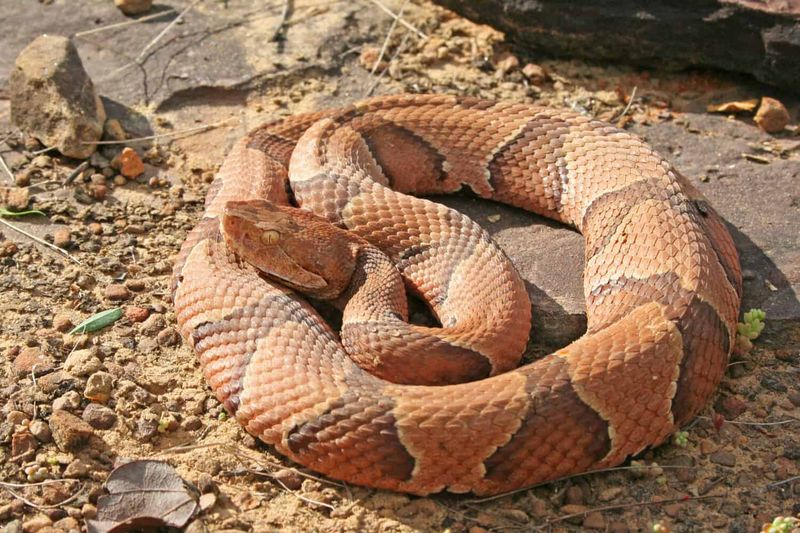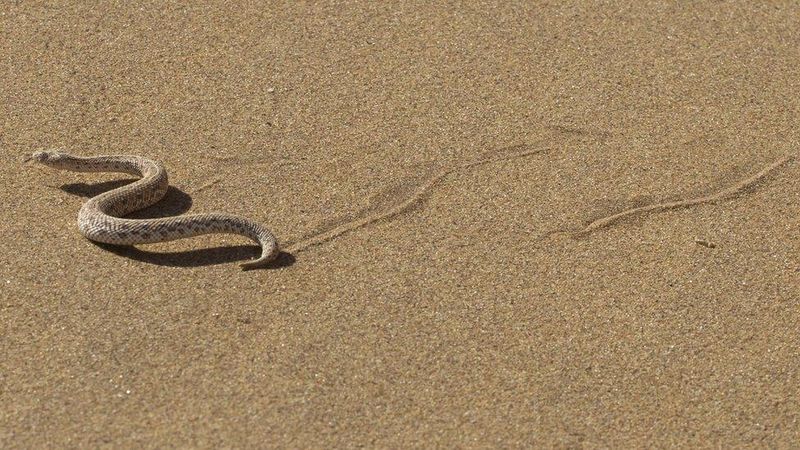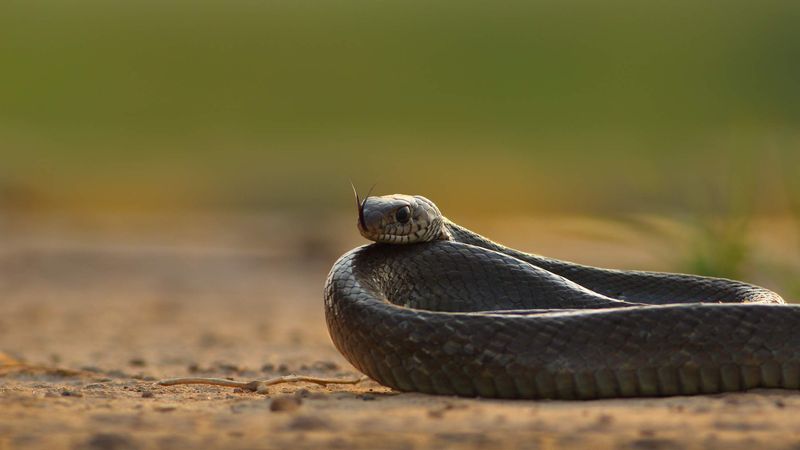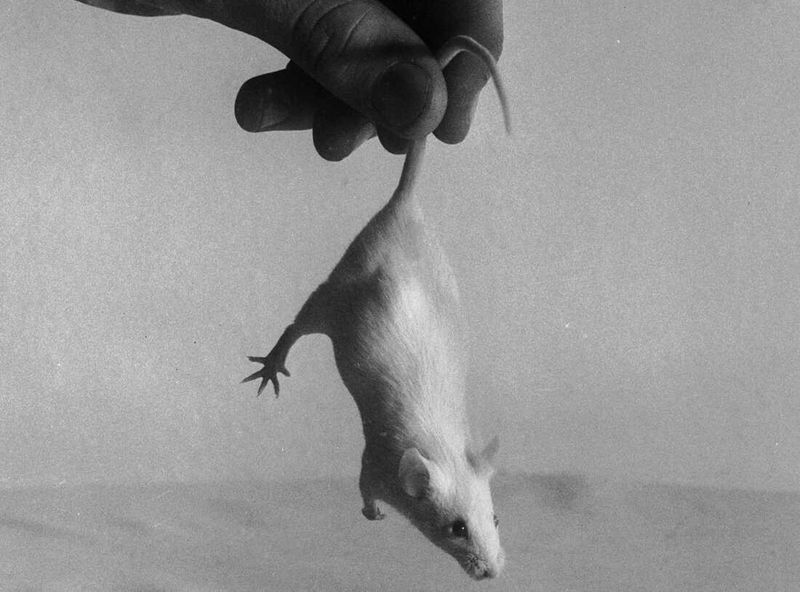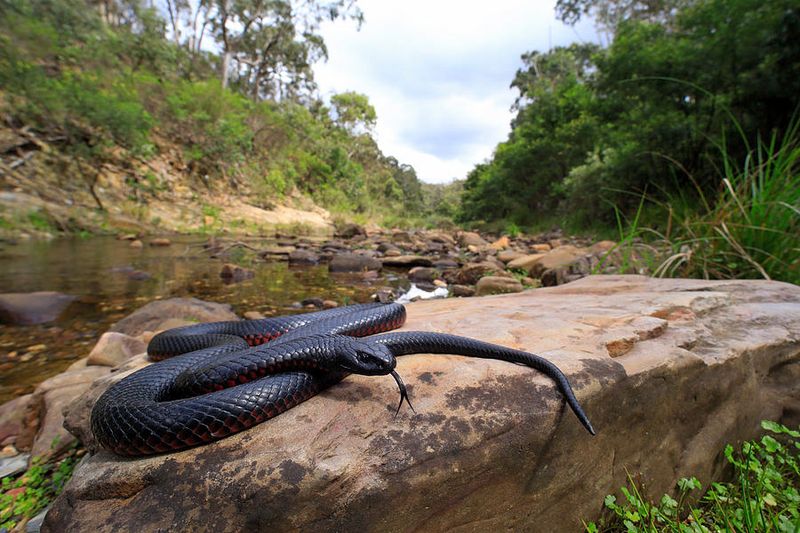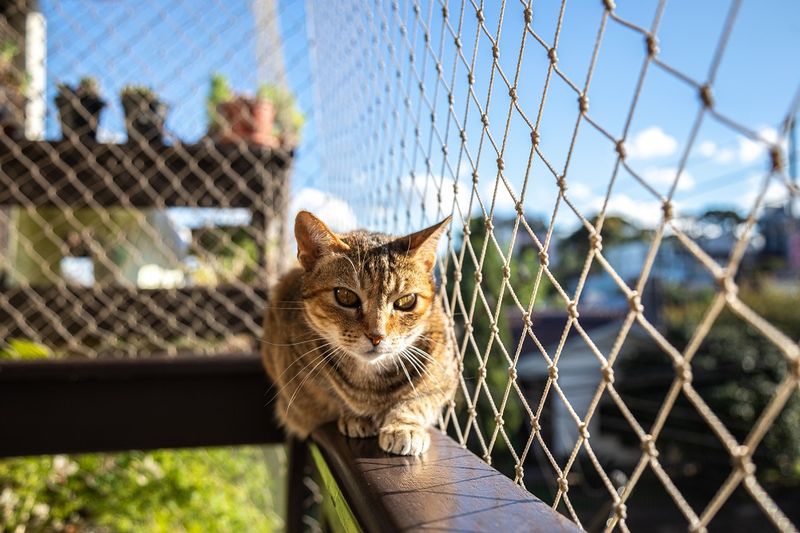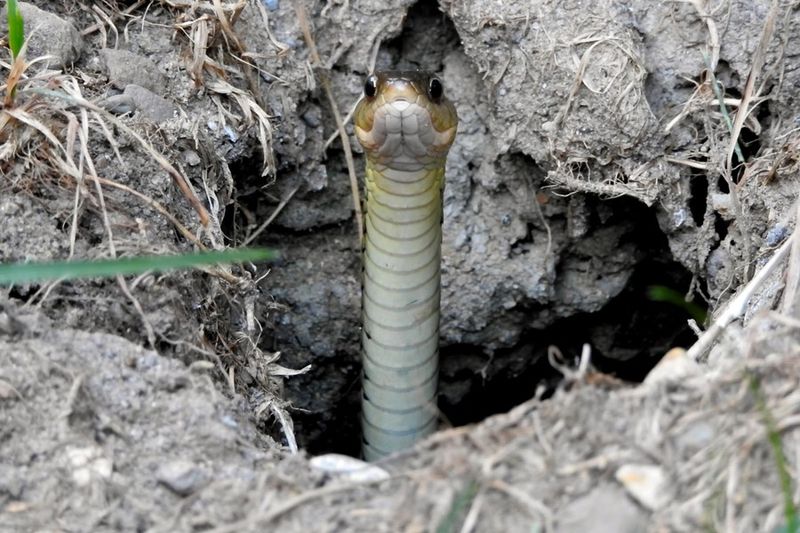📖 Table of Content:
When the weather warms up, both humans and animals become more active outdoors — and that includes snakes. For cat owners, this means being extra cautious, as your feline companions may unknowingly wander into a reptile’s path. While snakes typically avoid human interaction, yards filled with vegetation, rodents, or moisture can make the perfect hiding or hunting ground for them.
Even the most attentive cat can fall victim to a snake if the conditions are right. Whether it’s curiosity or territorial instincts, cats may approach or even attempt to engage a snake, not understanding the danger. Unfortunately, some snake species pose a serious risk to pets, leading to injuries or fatalities in areas where venomous snakes are common.
Fortunately, there are clear signs that snakes may be lurking around your property — and just as importantly, practical ways to reduce your cat’s risk. Recognizing these warning signals and adjusting your yard and pet routines accordingly can help keep everyone safe. This article breaks down what to watch for and how to respond effectively.
1. Shed Snake Skins
Scattered across gardens and beneath decks, snake skins are one of the clearest signs that a snake has recently passed through. These papery remnants are left behind as snakes grow and molt, typically clinging to surfaces or lying loosely in shaded spots. Unlike other animal traces, snake skins are easily identifiable by their scaly texture and the distinct outline of the snake’s body. Often, they appear whole or nearly whole, offering insight into the snake’s size and type. Their presence suggests the snake may still be nearby, especially if the skin is fresh. Cats may be drawn to the smell or texture, so discovery of such skins should prompt a close look around. Immediate removal and inspection of your yard is wise to ensure your cat doesn’t stumble upon the snake itself.
2. Snake Droppings
Hidden among leaf litter or garden beds, snake droppings often go unnoticed until you know what to look for. Unlike typical pet feces, these droppings resemble those of birds — dark with a chalky white tip — but may also include fur, bones, or insect shells. This mixture results from the snake’s carnivorous diet and can be particularly alarming to discover. Since snakes often return to the same area when hunting, repeated findings can suggest a pattern. Cats may sniff or paw at these droppings, increasing their exposure to disease or the predator itself. Regular inspection of outdoor areas, especially near bushes or pet feeding spots, can help identify this early clue. Once spotted, sanitizing and monitoring the area is crucial to discourage further snake visits.
3. Slither Tracks
Among the less obvious indicators, snake tracks can be spotted in loose dirt, mulch, or sandy areas of your yard. These distinctive trails appear as winding or straight lines, often accompanied by side impressions from the snake’s body. Gardeners might confuse these for drag marks or hose impressions, but a closer look reveals the pattern of motion unique to snakes. Their appearance signals recent activity and a potential nesting or hunting ground nearby. Since these tracks fade quickly with wind or rain, their freshness can hint at how recently the snake passed through. Curious cats might unknowingly follow these trails, heightening their risk of encounter. Keeping an eye on such subtle signs can give you an early edge in protecting your pets.
4. Snake Holes
Often mistaken for rodent tunnels, snake holes are actually entryways to underground shelters or places to ambush prey. These holes can be round or oval and typically range from half an inch to three inches wide, sometimes bordered by smooth or freshly disturbed earth. Snakes don’t usually dig these themselves but occupy abandoned burrows or natural crevices. Overgrown vegetation or clutter nearby can make these holes harder to spot. While cats are known for investigating holes out of curiosity, doing so in this case can be dangerous. A snake may strike defensively if surprised in its den. Sealing these holes and reducing cover in the area is essential to discourage long-term occupation.
5. Decreased Rodent Activity
Oddly enough, fewer mice or rats in your yard might not be a sign of success but rather a new predator in town. Snakes feed heavily on small mammals and may be naturally drawn to places where such prey once thrived. If you’ve suddenly noticed a dramatic drop in rodent sightings or evidence like droppings and burrows, a snake may be doing the hunting for you. Cats, while also rodent hunters, may now find themselves in competition or danger. This shift in the local food chain should raise concerns about a lurking snake presence. Watching how your cat behaves — if they seem more cautious or alert in certain spots — can offer further clues. Being attuned to these changes can help you act swiftly before your pet stumbles into trouble.
6. Direct Sightings
Nothing confirms a snake’s presence more definitively than seeing one with your own eyes. These sightings often occur in the early morning or late afternoon when snakes bask in the sun to regulate their body temperature. Paved walkways, rock gardens, and patios are common places for this behavior. While such encounters may be brief, they offer a critical chance to identify the species and assess the risk. Cats may become fixated or attempt to interact with snakes, especially if spotted regularly. Keeping a camera or note of when and where the sighting occurred can help track patterns. Once identified, the best course of action is professional removal if the snake poses a threat.
1. Supervised Outdoor Time or Enclosures
Replacing free-roaming habits with supervised outdoor time can significantly reduce a cat’s risk of encountering a snake. Catios — secure, enclosed patios for cats — offer a safe space for outdoor enrichment without exposure to predators. These enclosures can be built using mesh or fencing with fine gaps to prevent snake entry. Supervision during garden play or walks on a leash also adds a level of control and awareness. While some owners may worry this restricts their pet’s freedom, the trade-off in safety is well worth it. Snake-prone areas require heightened caution, especially during warmer months. Creating safe zones lets your cat enjoy fresh air without unnecessary danger.
2. Maintain a Tidy Yard
Clearing away clutter, trimming back overgrowth, and mowing your lawn regularly removes the hiding places snakes prefer. Woodpiles, tall grass, dense bushes, and yard debris create ideal conditions for snake activity. These areas not only offer cover but also attract rodents, thereby drawing snakes in. A clean yard reduces the ecosystem snakes rely on and makes them less likely to settle in. Additionally, removing pet food from outside dishes discourages both prey animals and their predators. Consider landscaping with fewer ground-level covers or raised garden beds to limit accessible zones. This approach makes your outdoor space less welcoming to serpents and safer for curious cats.
3. Seal Entry Points
Inspecting your yard’s perimeter and home foundation for holes, cracks, or open gaps helps shut down potential snake entrances. Even small openings can be exploited by snakes seeking shelter, especially during rainy or hot seasons. Repairing fencing, installing mesh barriers at ground level, and covering vents are simple but effective steps. Garages, crawl spaces, and sheds are also frequent entry targets that need attention. Since cats often roam these same spaces, the overlap creates risk. Blocking off these zones helps establish a secure boundary and gives you peace of mind. Proactive sealing makes your entire property a safer environment for pets.
4. Use Snake Deterrents
Adding natural or commercial snake deterrents can provide another layer of defense without harming the reptiles. Plants like marigolds, lemongrass, and wormwood are believed to repel snakes with their strong scents. Similarly, cinnamon and clove oil mixtures or sulfur-based repellents can be applied around yard edges or under decks. These methods create sensory barriers that snakes are unlikely to cross. Though not foolproof, they add deterrence when combined with other yard management strategies. Deterrents are especially useful in warm regions or places with regular snake activity. Always choose pet-safe products to avoid unintentional harm to your cat.
